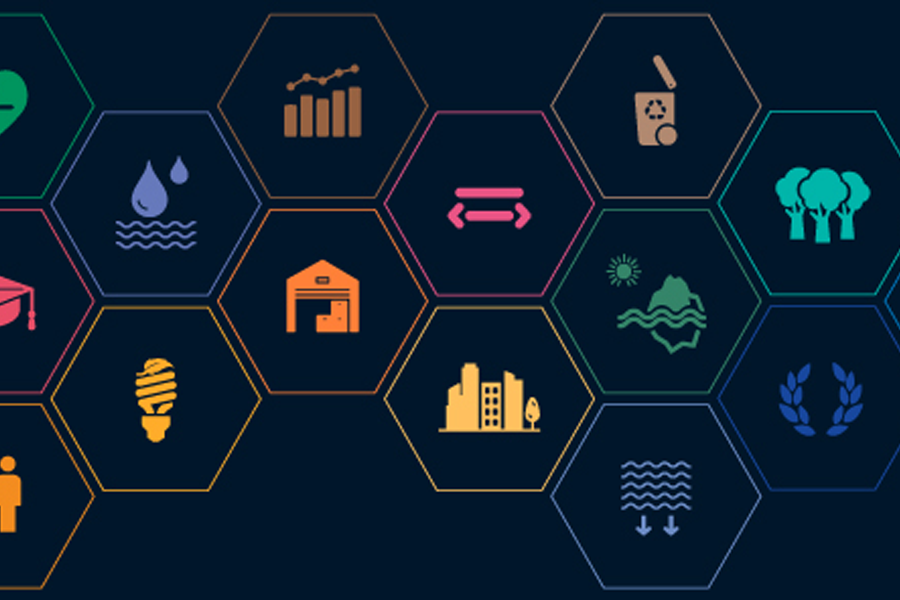Failure in progressing the Sustainable Development Goals (SDGs) is becoming a broken record. Every year, more capital is seemingly allocated to achieving them, yet every year we seem to move further from them. But investors are still keen to use the SDGs and more sophisticated approaches are emerging.
The latest UN progress report on the SDGs found “the reversal of years of progress in eradicating poverty and hunger, improving health and education, providing basic services, and much more”.
‘SDG-washing’ will be a familiar concept for ESG Clarity readers and it is well understood in the sustainable investment industry that the SDGs were not designed for use by it.
“The SDGs simply were not built for investing in public markets,” Stuart Forbes, co-founder of Rize ETF said. “Certainly not when most of your portfolio companies are serving customers in the democratised West.”
Despite this, it appears interest in their use in investment is not letting up. “Investors are asking for more sophisticated tools to measure the impact their assets are having on the environment and, more broadly, on society,” said Thomas Kuh, head of ESG strategy at Morningstar Indexes, which launched a suite of nine SDG-aligned indexes yesterday.
So how can investors make sure their SDG analysis is rigorous?
Geographic exposure
One reason SDG-aligned investments may not be having their intended impact is due to the difficulty in taking geography into account when weighting the impact on an SDG. In other words, a company addressing zero hunger in a country with huge hunger issues is clearly more aligned with the SDG of zero hunger than one addressing it in a country without – so how does this get shown?
“This is much more difficult to capture,” said Robin Rouger, sustainable investment analyst at J. Safra Sarasin, which recently developed an ‘SDG Engine’ to help the firm create portfolios that are aligned with the achievement of the SDGs. “Tracing the location of activities is very difficult if not impossible.”
At the moment, if two companies had the same split of activity, J. Safra Sarasin’s SDG Engine would find no difference in their contribution to the SDGs regardless of their geographic exposure, “which is not fair”, Rouger said.
“This is why we are thinking of adding an extra dimension in our approach, by using operational ESG scores. In this way, each company has a unique SDG profile.”
New funding
Linked to geographical exposure is the tendency for funds to cluster in the same sectors and holdings, thereby limiting the impact on the SDGs by not providing new funding.
“A mistake of the past has been to assume that the launch of a fund aligned to delivering on the SDGs or ‘impact’ is what is needed to tackle an area of deficit,” Andrew Parry, head of investments at JO Hambro Capital Management, wrote in ESG Clarity.
“As we have discovered through the shortfall in funding the goals, the money raised goes instead largely to existing activities or entities, without delivering additional funding.”
A Util report last year on the SDGs referenced a bias towards “large companies with reporting resource and against those in developing markets, due to perceived social and governance flaws and straightforward data gaps”.
Negative impact
Almost every company, industry and fund impacts some goals positively, others negatively, the Util report said.
Therefore, an assessment of SDG-alignment must consider the negative impacts an activity might be having on a range of goals, targets and indicators, as well as its positive impact one another.
Indeed, Parry said: “Investors keen to burnish their sustainability credentials have often been too ready to use the goals as a convenient label that focuses…only on positive associations. Achieving a sustainable future is as much about minimising harm as it is about delivering solutions.”
J. Safra Sarasin’s SDG Engine assesses a company’s activities’ positive and negative impact on the SDGs and also weights the importance of each activity. It can calibrate a net SDG score but questions still remain.
“Should we have a positive opinion on a positive score or should we compare it to the overall industry/sector scores and focus only on the companies with the best score regardless of whether the net SDG score is positive or negative?” Rouger said.
“The answer must certainly be in the middle of the two alternatives and may be different depending on the investor’s objective.”








